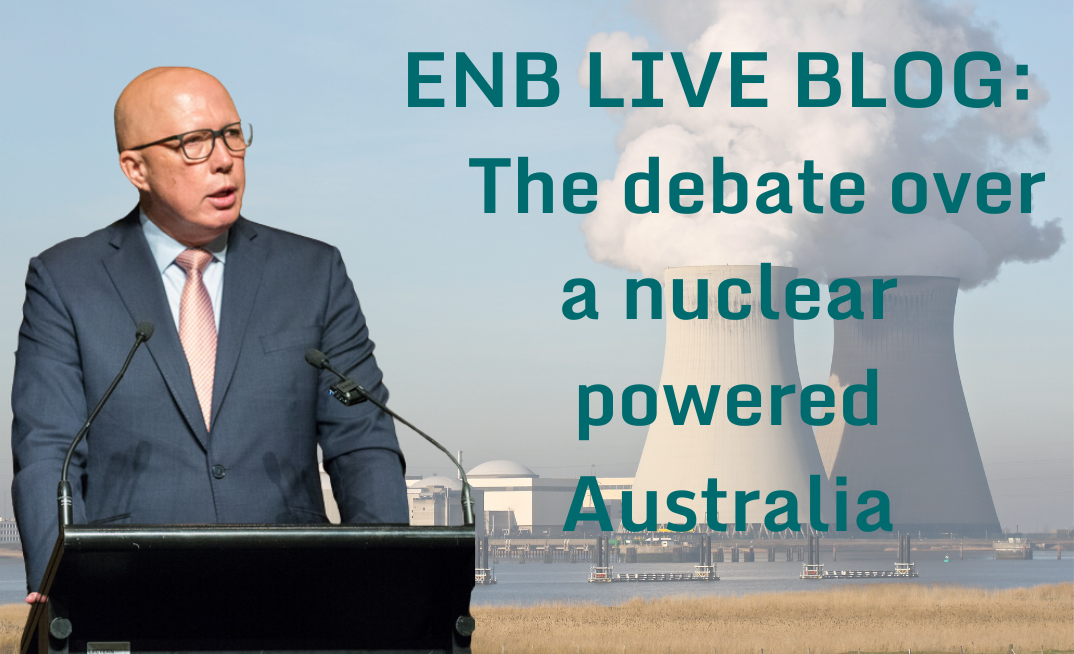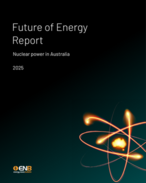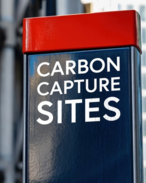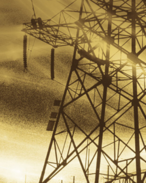As the Coalition and Peter Dutton finally release their the long-awaited costings for his much-debated plan to build seven nuclear powers stations on the sites of seven former coal mines if he's elected into office next year, ENB will keep you updated throughout the day with a live blog.
1328 AWST
That's a wrap
That's it from us on this rolling blog today. Still lots left to say and it's a subject that's going to dominate the electioneering to come over the next few months.
1315 AWST
Solutions for Climate Australia: Peter Dutton's nuclear fantasy equals soaring power bills
Solutions for Climate Australia has called out figures provided by Peter Dutton on the future cost of power from nuclear reactors as expensive and a failure to tackle climate pollution.
A statement read: "While we are waiting decades for Mr Dutton's nuclear reactors, the Coalition proposes to pour money into propping up expensive, ageing coal power stations that are already failing, and massively increasing climate pollution.
"CSIRO's optimistic estimates of the costs of nuclear reactors last week show them as twice as expensive as the renewable energy pathway. Somehow Mr Dutton claims using the most expensive source of electricity will bring down consumer costs.
"Even more bizarrely, the federal Coalition's plan relies on Australians using 45% less electricity than the independent electricity operator forecasts.
"What matters to consumers in the cost of living crisis we have here and now is the cost of electricity, and yet Mr Dutton is proposing a fantasy to build hugely expensive nuclear reactors on the taxpayer's dime, decades from now.
"Yesterday the Liberal Tasmanian Government made a joint announcement with the Labor Federal Government for an offshore wind zone that will produce 20 GW of electricity.
"It's time the federal Coalition gets serious about deploying the sun and wind power we have right here and now to bring down power prices and keep the lights on."
1231 AWST
IEEFA's response to the Coalition's costings report for their nuclear proposal
Johanna Bowyer is the Lead Analyst, Australian Electricity at the Institute for Energy Economics and Financial Analysis (IEEFA) "The Coalition Opposition's forecast of energy system costs with nuclear is unrealistic, as it contains underestimations and unclear costs.
"There are a number of areas in which the nuclear costs appear underestimated, including construction costs, fuel and operations & maintenance (O&M) costs, and construction timelines.

"How a number of costs have been factored in remains unclear – these include costs for small modular reactors (SMRs - which were proposed for South Australia and Western Australia), coal power plant extension costs, nuclear waste disposal costs, and potential nuclear accident liabilities.
"In addition, some misleading comparisons have been made, such as comparing the nuclear plan, which is based on lower electricity consumption, with the market operator's plan which has higher electricity consumption."
The IEEFA's analysis summised:
- Underestimated: Nuclear construction costs are too low
- Underestimated: Fuel and operations cost of nuclear is lower than expected
- Underestimated: Nuclear construction timeline
- Nuclear is unlikely to be in operation until the 2040s.
- Unclear costs: SMR considerations are not explored
- Unclear costs: Coal power plant extension costs do not seem to be mentioned
- Unclear costs: Nuclear waste disposal, nuclear accident liability
- Misleading: Nuclear plan is costed for an economy with less electricity consumption
- Misleading: Spreading the cost over 50 years with unclear refurbishment costs
"The Coalition Opposition is risking the public purse on an expensive technology that Australia has limited experience with.
"Nuclear is one of the most expensive forms of electricity generation and we found that introducing nuclear would result in rising bills.
"In our recent report, we looked at the actual, real-world experience of nuclear reactor projects installed overseas and found they were plagued by delays and cost overruns, and had costs far higher than what the Coalition Opposition is assuming.
"Based on overseas reactor projects, we found that nuclear power would cost 1.5 to 3.8 times the current cost of electricity in Eastern Australia.
"For nuclear power plants to be commercial and operating 24/7, the wholesale price would need to rise to these higher levels in order to enable nuclear cost recovery.
"This means household power bills would have to go up by $665 for a typical household and $972 for a four-person household per year.
"If nuclear costs were not recovered through the wholesale market and on power bills, then nuclear would require subsidies to remain commercial, and it appears these have not been included in the modelling.
"There are many remaining open questions around the nuclear proposal," said Johanna.
1203 AWST
Rewiring Australia: Nuclear won't deliver the lowest-cost energy system
Rooftop solar and distributed energy resources will deliver the cheapest form of energy whereas nuclear energy will likely be too expensive and slow to solve any problems for Australia, said Rewiring Australia founder and chief scientist Dr Saul Griffith.

"A lowest cost energy system will maximise rooftop solar and distributed energy resources, because that delivers the lowest priced electricity to consumers, while also lowering transmission requirements," said Dr Griffith.
Rooftop solar in Australia is delivering energy at five cents per kilowatt hour while new nuclear power in the US is delivering it at 20 cents before it even hits the grid.
"Electrification could bring $1.7 trillion in savings for Australian households but there is a risk that a focus on nuclear will prevent this cost of living dividend being realised.
"Nuclear is proposed as so-called "baseload" power, which has never been the problem for Australia. The challenge is meeting demand peaks and industrial loads at low cost.
"Industry needs energy to be very cheap, something that nuclear is not, so it's not solving any real problems here."
Dr Griffith proposed that Australia should be involved in the research effort to develop genuine next-generation nuclear technologies, both fusion and fission. This could contribute to international efforts to lower the price and increase the safety of nuclear power.
"Some countries that are small, cold, and with higher population density and minimal solar and wind resources will need nuclear to replace fossil fuels, but Australia has the opposite population and geographical characteristics," said Dr Griffith.
"Furthermore, we are a water-starved nation and each nuclear power plant will guzzle 1.8-2 litres of water per kilowatt hour of electricity produced." A GW-sized nuclear plant will need up to 2 million litres of water every hour, which will limit its applicability in Australia.
1135 AWST
Australian Energy Council: concern about the assumed lack of investment
The peak body for energy retailers and generators, the Australian Energy Council, said the release of the Opposition's nuclear costings and future energy mix raised questions on the role of the market in an energy system with significant volumes of government-owned nuclear plants.
The Australian Energy Council's Chief Executive Louisa Kinnear said, "We are particularly concerned about the assumed lack of investment in new and replacement generation over the next ten years.

"We acknowledge both consumers and industry have become concerned with the cost and deliverability of the transition, but slowing investment while we assess technologies only available in the future creates a significant risk for the stability of the energy system.
"A key issue is the modelling assumes coal remains in the system for longer than asset owners have advised, which could result in reliability issues.
"The Coalition energy mix and approach would mark a significant departure from the current energy transition trajectory, with far reaching consequences for market design decisions, investment decisions for the sector and the emissions trajectory Australia can achieve.
"Given the approach would remain speculative for a number of years as social licence and other hurdles are overcome, the AEC believes the responsible path in the next ten years is to continue with the rollout of available technologies like wind, firmed by gas, pumped hydro and other forms of long duration storage as we assess other alternatives.
"The current focus should be on ensuring a market design that provides the right investment signals for the new and replacement generation needed over the next ten years and beyond."
1015 AWST
Clean Energy Council analysis
Data from the Clean Energy Council has been published showing the cost and time blowouts of every nuclear power station developed in OECD nations since 2000.
1005 AWST
Climate change and energy minister Chris Bowen's press conference
You can watch it here:
0958 AWST
Green Party reaction: "radioactive con job for coal"
The Green Party say the Liberals' nuclear delusion is a radioactive con job for coal, slamming Dutton's nuclear announcement as a "costly and dangerous wild goose chase that only exists so he can pretend he cares about climate change."
Adam Bandt MP, Leader of the Australian Greens, said: "Peter Dutton's nuclear delusion is a dangerous con job. It's just a cover up for more coal, and it's a threat to people's safety.

"If his pipe dream is ever built it means a radioactive risk will hang over the whole country. Every time Peter Dutton pushes his dangerous delusion, remember Chernobyl, remember Fukushima.
"Peter Dutton has offered no guarantee that nuclear is safe, because he can't.
"Nuclear is not safe. Coal and gas are not safe, but wind and solar are. A clean energy future is the only safe future.
"Peter Dutton will keep kicking the nuclear can down the road, while continuing Labor's approvals of new coal and gas projects and keeping climate pollution rising.
"Peter Dutton's plan will keep coal in the system for longer and make climate change worse.
"It's unsafe, it means more climate pollution and the Greens will fight it tooth and nail."
0941 AWST
Reaction from the Minerals Council of Australia
The Minerals Council of Australia (MCA) has welcomed the release of Coalition's modelling
Tania Constable, the MCA's CEO said: "Independent analysis by Frontier Economics demonstrates nuclear power should be a critical technology on the table for Australia to consider, as it is elsewhere around the world and particularly amongst Australia's strategic partners.

"The modelling dispels arguments that nuclear is uneconomic and that removing the ban would be a distraction. It shows that diverse electricity generation technologies can work together to improve system security, reliability, and affordability
"A balanced approach provides a practical solution to reducing power bills for families and lowering operating costs for businesses across the country, while delivering the 24/7 baseload power essential for energy security and stability."
0931 AWST
Nuclear for Australia: "44% cost reduction realistic and consistent with US Department of Energy"
Nuclear for Australia say the country Australia is on the cusp of a transformational energy breakthrough as an independent analysis from Frontier Economics reveals that integrating nuclear energy into our energy mix could save $263 billion.
This aligns with findings from the US Department of Energy's "Nuclear Liftoff Report," which underscores nuclear energy's unparalleled value in achieving net-zero emissions.
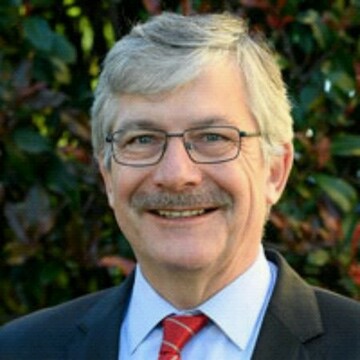
Dr. Adi Paterson, Chair of Nuclear for Australia, stated: "This analysis shatters the myth that nuclear is too costly for Australia. By adopting nuclear, we not only secure reliable, affordable power but also reduce emissions at a scale unmatched by any other energy source.
"This modelling is based on AEMO's Progressive Change Plan which is widely accepted and endorsed by the Government, showing that low carbon nuclear will provide 44% cost reduction that achieves Australia energy and climate targets."
Will Shackel, founder of Nuclear for Australia, added: "The data speaks volumes: nuclear is the pragmatic, cost-effective choice. The government's adherence to flawed modeling risks burdening future generations with unnecessary expenses and unreliable power."
0927 AWST
Chris Bowen to hold press conference
It's been announced the Minister Chris Bowen will hold a press conference in Sydney at 1300 local time.
0908 AWST
Smart Energy Council reaction
0901 AWST
Climate Council: "Less power, more climate pollution"
"Peter Dutton's nuclear numbers have more holes than Swiss cheese, leaving out big ticket items like the costs of dealing with radioactive waste," says the Climate Council CEO Amanda McKenzie, slamming the Federal Coalition's misleading modelling.
"Dutton must be honest with the Australian people. CSIRO tells us nuclear is double the cost of renewables, no amount of dodgy accounting can change the facts.

"The Federal Coalition's nuclear scheme would send our kids' future up in smoke. Waiting up to 20 years for nuclear reactors means burning coal and fossil gas longer—adding 1.5 billion tonnes of climate pollution by 2050. That means more deadly bushfires, floods, and heatwaves.
"Investing in renewable power backed by storage is the only way we can tackle climate change and replace our ageing coal fleet this decade.
"More than four million Australian households have already put solar panels on their roofs, saving $3 billion a year on electricity bills.
"Expanding access to rooftop solar will cut bills further, reduce climate pollution, and drive a cleaner, safer energy future. Let's focus on what's already working."
Nicki Hutley, Climate Councillor and economist, added: "It's shocking to see the Federal Coalition knowingly mislead Australians on the true costs of nuclear. If we're going to debate the economics of energy it must be based on real-world evidence–not dodgy modelling that obscures the real price tag.
"Nuclear doesn't add up for Australia. The CSIRO tells us that nuclear energy will cost twice as much as renewables, and the risks of further budget and bill blowouts are simply not worth it. International experience has proven that nuclear is a financial black hole, with the average project costing more than double its original estimate, and projects like the UK's Hinkley Point C costing triple. We're already seeing renewables deliver power faster and at lower cost today."
Greg Bourne, energy expert and Climate Councillor, said: "Australians can't afford to wait 20 years for nuclear. All our coal-fired generators are due to close before even the first nuclear reactor could be built, and keeping our old coal clunkers running past their use-by-date presents a critical risk to our energy security.
"We need more renewables backed by storage now so it's online before more coal is retired."
0857 AWST
Energy expert Simon Holmes a Court reacts
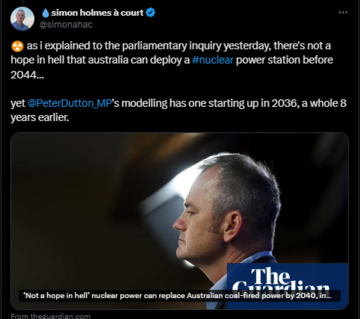
0853 AWST
Greenpeace Australia Pacific - costings are a "dodgy distraction"
"The Coalition's nuclear reactor costings don't appear to have passed the pub test from experts—or even their own party. They are a dodgy distraction from the fact that nuclear energy is too risky and slow for Australia, and we just don't need it," says David Ritter, CEO, Greenpeace Australia Pacific.
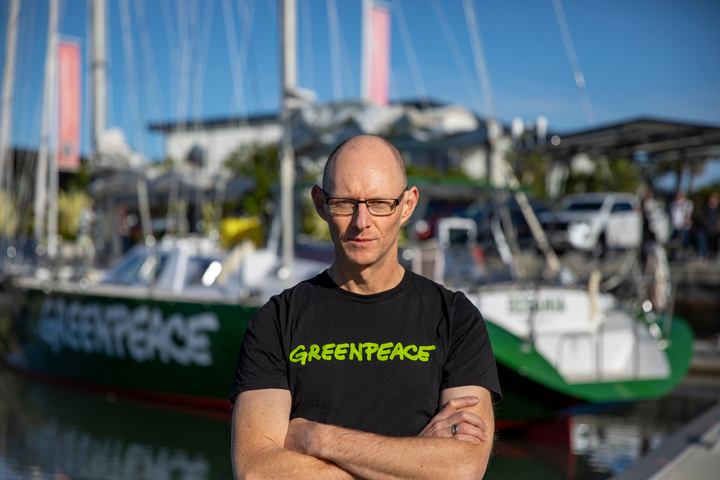
"Just days ago, independent modelling from CSIRO showed that, even with the Coalition's specifications factored in, nuclear reactors are at least 50 per cent more expensive than renewables. The Coalition tried to fix the race, but the nuclear option still finished last.
"Not only does the Coalition seem ignorant about the real world speed and cost of building out nuclear, it entirely misses the devastating human cost of a potential nuclear waste accident and the climate cost of continuing to burn coal for longer while we wait for nuclear, instead of rapidly growing available renewable solutions.
"We know that clean energy solutions like solar and storage are cutting household bills now. For a safe climate and our hip pockets, we can't afford to waste this critical decade on delaying the renewables roll-out to chase the false promise of nuclear.
"All Australian politicians must be conscious of the cruel and painful nuclear legacy in our region, including lasting pollution, social and health consequences from atomic weapons testing in the Pacific and Australia.
"Kids from communities like Tarong, Liddell and Collie should not have to grow up in fear of a radioactive accident from a nuclear reactor. Nor should Indigenous communities be subjected to the spectre of their traditional Country becoming a dumping ground for nuclear waste.
"The Coalition can have no credibility on climate, cost of living or regional cooperation as long as it continues to shove its nuclear fantasy down the throats of Australians, who deserve affordable energy and a future that is safe from deadly, climate-driven disasters.
"Greenpeace has a long and proud history of fighting against nuclear testing, weapons proliferation and nuclear reactors. We will continue to call out this dangerous, costly technology and champion renewable solutions to help reduce emissions at emergency speed and scale," said Mr Ritter.
0851 AWST
Analysis and reaction from the Australian Conservation Foundation
The Australian Conservation Foundation says for just one-fifth of the Coalition's nuclear price tag, the government could install rooftop solar on every house in the country that doesn't already have it.
And for less than half (42%) of the $331 billion, the government could also install a battery system on every Australian house that doesn't already have one.
"For just a fraction of what the Coalition says its nuclear ideas will cost, the government could pay for the installation of rooftop solar on every house in Australia, saving households $1,300 a year and generating clean, sustainable, energy to power our homes far sooner," ACF CEO Kelly O'Shanassy said.
"The CSIRO's GenCost work and multiple independent analyses consistently rank nuclear as Australia's most expensive energy option.
"The Coalition's assumptions defy lived experience of the nuclear industry overseas, where nuclear projects routinely run over time and over budget, leaving taxpayers to pick up the tab.
"In the unlikely event the Coalition's nuclear ideas ever go ahead, we would be waiting at least 20 years for the reactors. That is far too slow to be an effective response to the climate crisis, which is affecting Australians right here, right now. We don't have two decades to waste.
"Instead of nuclear, Australia's energy sector is investing heavily in renewable technologies, which already supply 40 per cent of Australia's electricity.
"The Coalition's plan is full of holes. It lacks fundamental detail on reactor types, the proportion of nuclear slated for the national grid, as well as site preparation, assessment, licencing and regulatory costs.
"Today's announcement conveniently ignores the massive costs and risks that come with storing this highly toxic material for thousands of years. The renewables transition is already powering ahead. We don't need this nuclear distraction. Australia's energy future is renewable, not radioactive."
0804 AWST
Climate change and energy minister Chris Bowen reacts
Climate change and energy minister Chris Bowen has taken to social media to give his reaction.
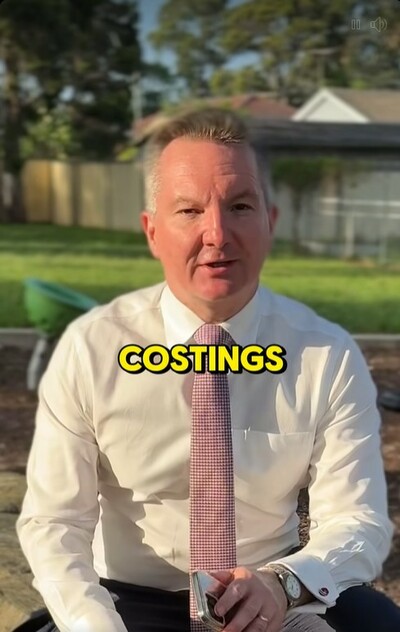
0758 AWST
Dutton's office releases their costings documents
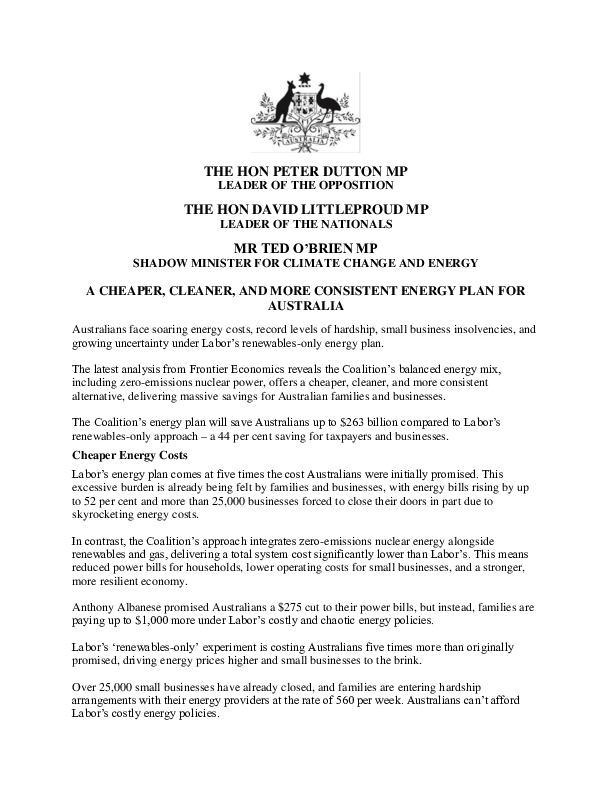
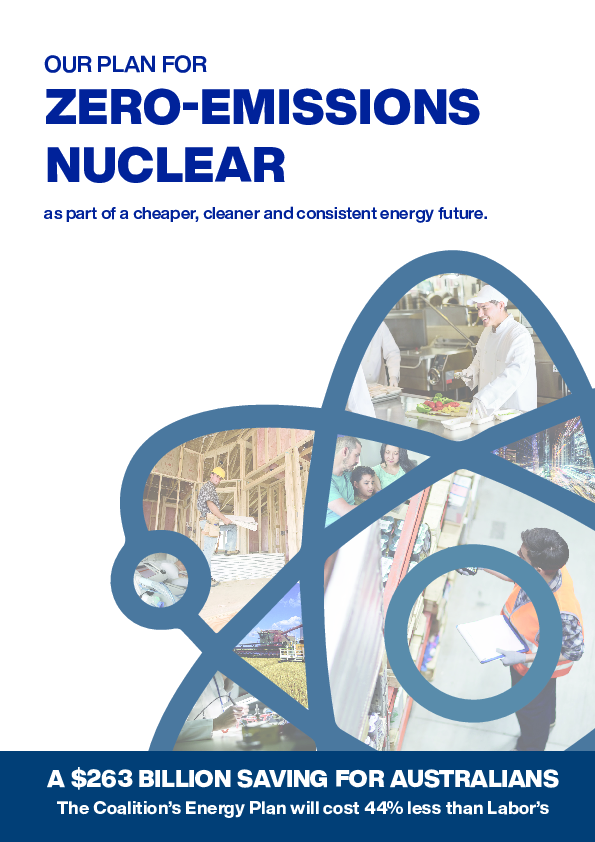
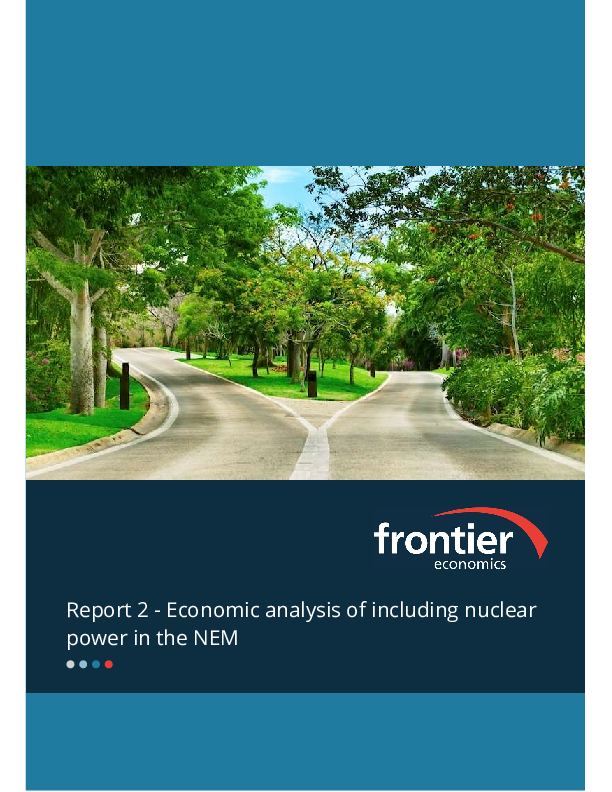
0746 AWST
Reaction from Fortescue Chairman, Dr Andrew 'Twiggy" Forrest
Fortescue and Tattarang Chairman, Dr Andrew Forrest AO:
"Nuclear power doesn't stack up for Australian families or businesses dealing with the cost of living crisis today.
"We need the certainty of lower bills now, not at some distant point in the future.
"The best way to do that is to pick up the pace of what's working today - the nationwide build out of renewable energy.
"As our national science agency has shown, ‘firmed' solar and wind are the cheapest new electricity options for all Australians.
"The cost of electricity generated on a grid dominated by firmed renewable energy in 2030 will be half what you would have to pay if it came from nuclear, CSIRO found.
"Without continued action on low-cost, high-efficiency renewable energy, Australians will be left holding the bill for pricier power and crumbling coal stations.
"We must never forget - Australia has the best renewable resources in the world.
"Seizing these Australian opportunities must be our shared national goal."
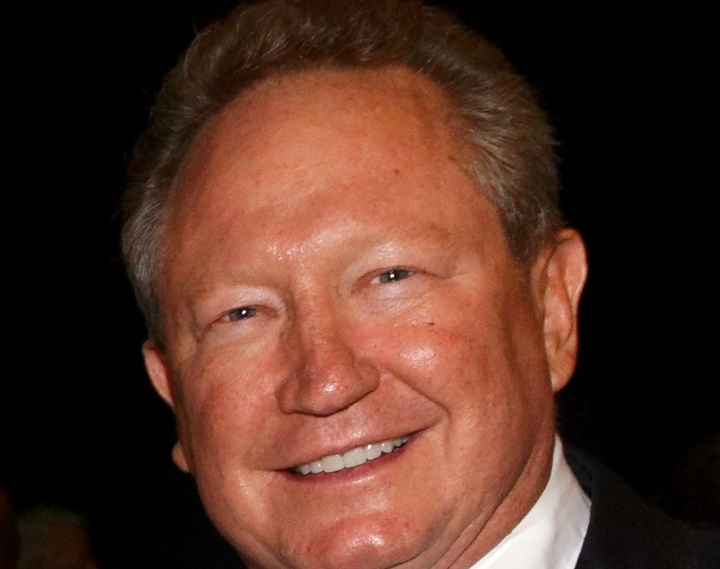
0742 AWST
Peter Dutton is now speaking in Brisbane.
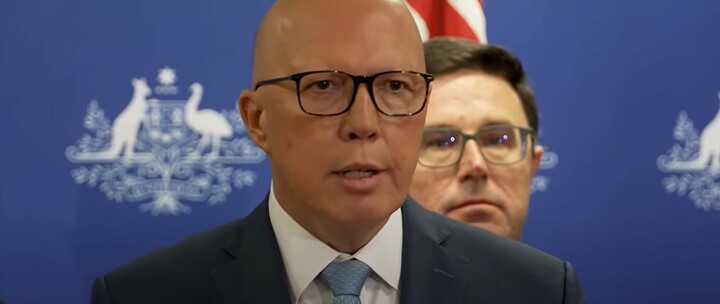
0737 AWST
New nuclear focussed report from ENB
Regular readers of ENB will have noticed how closely the issue of nuclear power has been followed on our webpages.
Shortly we will be releasing our Future of Energy Report: Nuclear Power in Australia.
In this report – through speaking to individuals and experts in Australia and overseas and by polling people working in the energy sector, we have tried to tease out what's driving people's opinions and exactly what those opinions are.
We've also examined the political landscape of Australia in 2024, looked at the wider APAC region and its embrace of nuclear power and also considered the financial cost and practical viability of a nuclear-powered Australia.
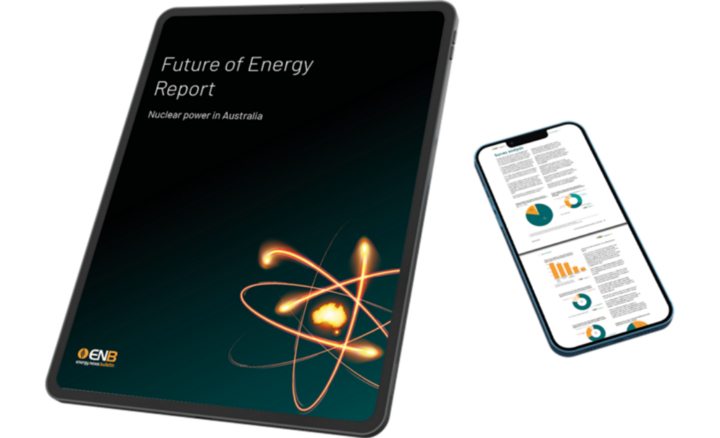
Look out for the report's publication, coming soon.
0730 AWST
Dutton to speak soon
Peter Dutton is about to speak to a press conference he's called in Brisbane.
You can watch it here:
0715 AWST
According to the number crunchers from Frontier Economics – commissioned by the Coalition to do the sums – the plan will cost $263 billion less than Labor's renewable energy policy by 2050, with modelling suggesting this will lead to considerably lower electricity bills.
The full bill for the project – originally announced in June and debated ad infinitum since then - estimates the construction and operation of the nuclear plants will deliver net zero by 2050 and cost $331 billion.
Labor's policy - based on the energy regulator's Integrated Systems Plan (ISP) - would cost $594 billion.
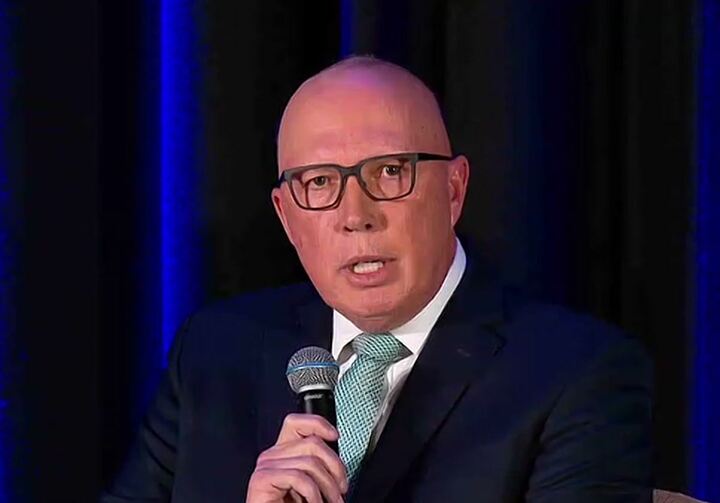
"Frontier Economics' analysis leaves no doubt," Dutton said.
"Australians will be better off under our plan. We will avoid hidden costs, reduce unnecessary infrastructure expenses, and lead to lower energy prices."
"Advanced economies worldwide are expanding nuclear programs to meet their energy and emissions goals, and Australia must not be left behind" he added.
As if anymore indication were needed, but the issue of energy and energy costs is likely to be a sizeable political Sherrin, as Australian walks towards the general election over the next five months.
In something of a change from the expectations of many, in the Coalition's modelling renewable energy would still be the dominant source of power by 2050, responsible for 54 per cent of generation in the National Electricity Market (NEM).
But nuclear power would provide 38 per cent, with the rest coming from storage, such as batteries, and gas.
Under Albanese's policy, about 94 per cent of generation by 2050 would be renewable energy, with the rest to coming from gas and storage.
In terms of the phase out of coal, Labor's plan sees 90 per cent of coal-fired power having exited the system by 2034, whereas the Coalition believes coal will need to stay operation for "a few years" beyond 2034, until nuclear reactors are running to keep the electricity grid working.
Again, in an unexpected turn of events, Dutton's plan will use less gas than Labor's policy, because there will be fewer renewables to firm. According to the modelling, that means its total energy mix would lead to fewer emissions by 2050.
Dutton's on the ground plans are that a Coalition government would build, own and operate seven nuclear power plants – two small modular reactors (SMRs) and five large power plants – in five states to deliver reliable and clean energy.
The Coalition say that if the first to be built is an SMR it will be ready by 2035 and if it was a large power plant it would be ready by 2037.
Froniter's modelling takes a happy average and works on the basis of the first plant would be online in 2036 – a full four years earlier than deemed possible in CSIRO's GenCost analysis.
Community consultation
The Coalition have also outlined how – if elected – they will conduct feasibility studies and a community consultation process with the aim of settling the sites for the first two plants within two years.
Throughout this process the Coalition will be pushing their core message that its nuclear policy is 44 per cent cheaper than Labor's energy plans - the equivalent of $10 billion a year.
Cognisant of the criticism of the idea of nuclear power which have filled column inches and the airwaves since Dutton first unveiled his plan, the modelling considers the total systems cost, including capital and operating costs of the entire network, given these are inevitably passed back to consumers. It also puts a conservative lifespan of 50 years on a nuclear plant, rather than the previously mentioned 80 years.
The plan envisages replacing 65 per cent of coal capacity with nuclear energy, with the aim of generating 13.2 gigawatts of nuclear energy in the country's east by 2050 – or 14 gigawatts including one plant in Western Australia (WA is not part of the NEM and was left out of the modelling to provide for easier comparison with the energy regulator's ISP).
The new modelling claims that - once the cost of significant amount of new transmission infrastructure needed to connect Labor's network of giant renewable projects is factored in, as well as the capital costs of projects currently not counted, such as the $12 billion Snowy Hydro expansion - the total systems cost of the government policy at $594 billion, higher than government figure of $122 billion.
The cost discrepancy between the two policies reportedly centres around not having to build new transmission infrastructure, keeping coal in the system for longer, and the economics of running nuclear around the clock as a baseload power.
In its GenCost report CSIRO says this was taken into account and still came back with nuclear powered electricity costing twice as much as that generated by renewables.


